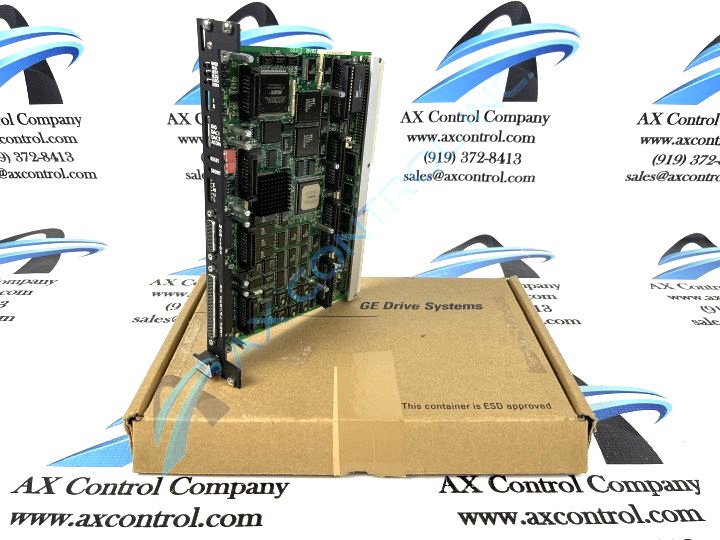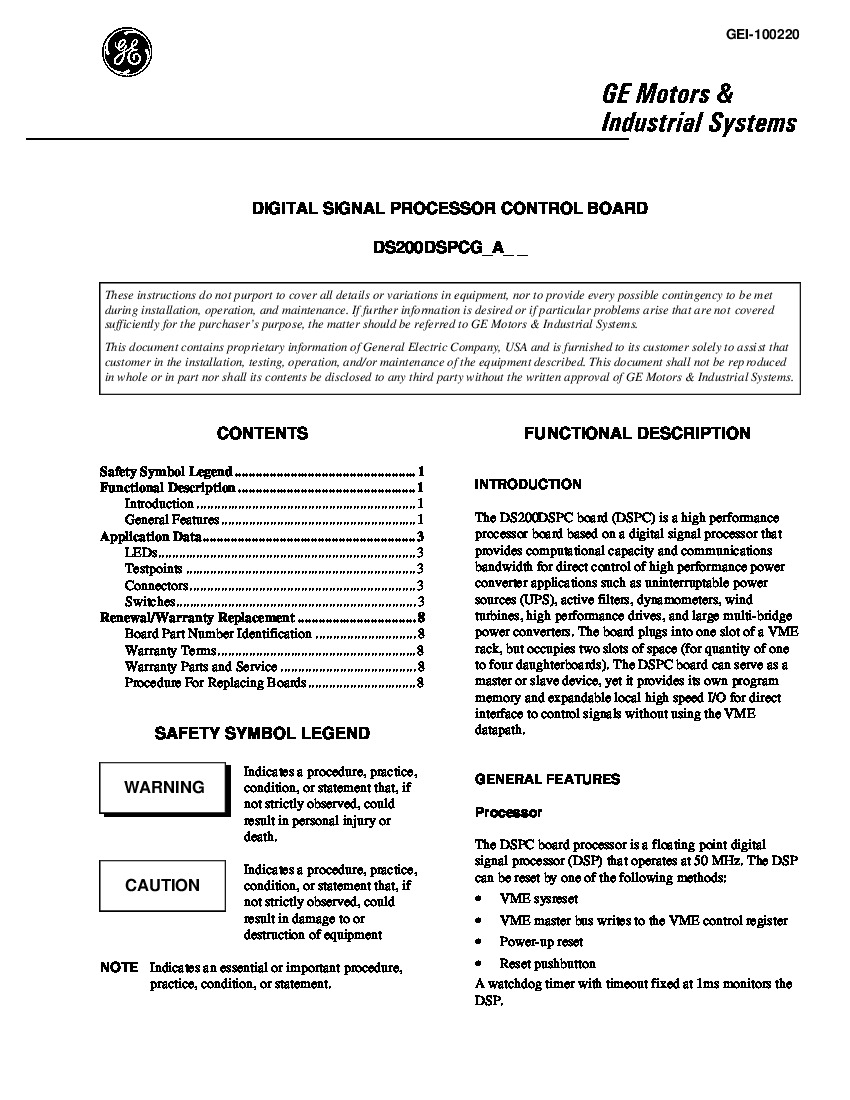About the DS200DSPCH1
The DS200DSPCH1 printed circuit board product offering featured on this personalized product page was, as described above, originally manufactured by General Electric, for use in their Mark V Turbine Control System Series specifically. The Mark V Series that this DS200DSPCH1 printed circuit board or PCB for short is a member of, as you may have been able to guess through its full extended series name, has specific applications in the management and control systems of popular and compatible wind, steam, and gas turbine automated drive assemblies. This DS200DSPCH1 PCB's greater Mark V Series is also classifiable as a General Electric now-obsolete Legacy product series, as its manufacture was discontinued in one of the many years following its initial design and production. While obsolete as a GE legacy product series, this DS200DSPCH1 PCB's Mark V Turbine Control System Series is one of the most recently-developed General Electric Mark product series to make use of their patented Speedtronic control system technology first released alongside the rollout of the Mark I series in the mid to later 1960s. This DS200DSPCH1 printed circuit board is the original product of its intended Mark V Series functional role, as proven by the DS200DSPCH1 functional product number's lack of any trailing, revision-indicating alphanumeric digits.
Hardware Tips and Specifications
The GE Digital Signal Processor Control Board DS200DSPCH1 provides processing capacity and communications bandwidth for direct control of high performance drives and other power converter applications. The GE Digital Signal Processor Control Board DS200DSPCH1 features expandable local I/O for direct interface to control signals. There are several way to reset the processor on the DS200DSPCH1. You can use the VME sysreset command, you can command the VME master bus to write to the VME control register, use the power-up rest function, or use the reset button on the board. The GE Digital Signal Processor Control Board DS200DSPCH1 features two VME bus interface connectors that are compatible with the programmable logic controllers. Flash memory is available on a removable SIMM card, and EEPROM is can be added to the board on a connector on the board. As with any Mark V Turbine Control System Series product offering, this DS200DSPCH1 PCB is considered a static-sensitive printed circuit board device that is not meant to come into contact with any live wires or other Mark V Series products outside of its mounting system. With this in mind, this DS200DSPCH1 printed circuit board product offering's voltage suppression strategy involves the incorporation of a series of Mark V Series-standardized voltage-limiting hardware components into its internal assembly. Some of these crucial hardware components include various styles and versions of Mark V Series capacitors, transistors, rectifiers, and integrated circuits.
Given the fact that this DS200DSPCH1 PCB belongs to the now-obsolete Mark V Turbine Control System Legacy Series, it should come as no surprise that its original instructional documentation is largely available online for the sake of the personalized product page here. With that being true, the DS200DSPCH1 functional product number can be considered a primary source of DS200DSPCH1 Board hardware information, coding for various general specifications in a series of functional naming chunks. For example, the DS200DSPCH1 functional product number begins with the DS200 series tag dictating this DS200DSPCH1 PCB's Normal Mark V Series assembly as well as its domestic original manufacturing location. Some of the other relevant hardware details revealed through the DS200DSPCH1 functional product number include this Mark V Series PCB's:
- DSPC functional product abbreviation
- Conformal PCB coating style
- Group one Mark V Series product grouping
- Absence of any notable product revisions
The DS200DSPCH1 board also provides for serial communications which can be used for communication between multiple signal processor control board. Before you can use the serial ports for communications, you must use the configuration utility to enable the ports on all boards and configure the parameters on each board to enable communications. The board also has four connectors into which you can connect daughter cards for added processing flexibility and functionality. Each position for the daughter cards contain two connectors. One is a 60-pin connector and one is a 40-pin connector. They provide for high-speed signal connections and power connections. The four positions are are interchangeable. But after the DS200DSPCH1 card is assigned to a project, the card must remain the same card position.















